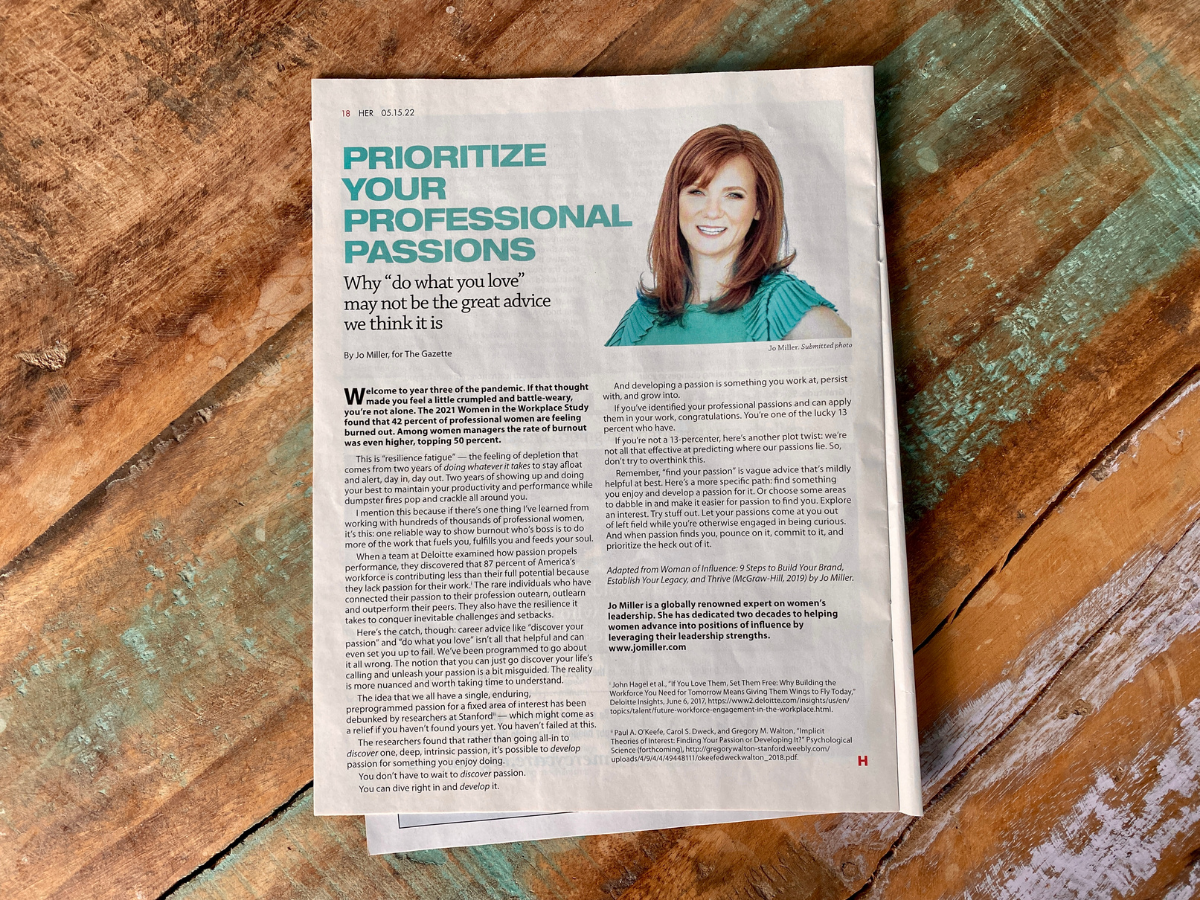Want to connect to a bigger, bolder vision for your career? Try taking on a stretch assignment: A new project, role or task that is beyond your current expertise. Whether it requires turning around a struggling product or team, automating an inefficient process or delivering a big presentation to a VIP client, you’ll be compelled to rapidly develop new technical, business or leadership skills.
There is towering evidence confirming the power of stretch opportunities. Just ask any experienced leader. Egon Zehnder’s survey of 823 international executives found that 71% of senior leaders said stretch assignments had the biggest impact on unleashing their potential. Also, research from Korn Ferry identifies stretch or rotational assignments as the most valuable leadership skill-building experience, ahead of action learning, mentoring, relationships, 360° assessments, exposure to more senior leaders and formal classroom training.
In 2019 I conducted original research about stretch assignments. What I discovered after surveying 1,500 professionals is detailed in the report, “Out of the Comfort Zone: How women and men size up stretch assignments — and why leaders should care.”
I found that women and men factor in similar motivations and roadblocks when deciding whether to accept a stretch assignment. For both genders, the top criteria for saying “yes” to a stretch are having the personal influence to drive a successful outcome, and alignment with their career goals. Women and men agree that office politics, not lack of time, is the biggest practical challenge to taking on a stretch assignment.
There are also some differences. When deciding whether to say “yes” to a stretch assignment, women are more likely than men to prioritize exposure to key mentors and sponsors (18% vs. 11%.) Meanwhile, men are 3.5 times more likely than women to cite ‘pay’ as a factor that makes a stretch assignment appealing.
Make no mistake: A stretch assignment is no small commitment. One exec jokingly referred to them as “night jobs.” You wouldn’t want to accept, or overextend your stay in, a thankless job. So why accept a thankless stretch assignment? One survey respondent, a senior manager with a cloud-based software firm said he looks for a balance of “challenge, risk and reward” when evaluating whether to accept a stretch, and you should, too.
Ready to tackle a high-intensity, high-profile project? Go you! Here are four rules for assessing whether an assignment is the right fit.
Four Rules for Accepting a Stretch Assignment
1. Don’t be afraid to take a risk. Stretch assignments come with tradeoffs. It’s risky to commit to high-stakes work that adds to your workload. But it’s a chance to develop new skills, discover new strengths and build influential networks. “I ask myself, Am I ready for change? Am I ready to be uncomfortable? Am I ready to make a mistake and learn from it?” wrote a woman working as a senior manager in consumer goods manufacturing.
2. Define your direction. The ideal stretch fuels your passions, plays to your strengths, and allows you to make a measurable business impact. Scan your org’s landscape for business opportunities that match the challenges you’d like to solve. “I look for a complex challenge so that I can learn and grow, make impactful change and prove my abilities,” said one survey participant with ambitions to make her mark within a multinational manufacturing conglomerate. Once you have ideas, find evidence to support why they are helpful. Show your management what’s needed and why you’re excited about the part you could play.
3. Go after a project no one wants. Sure, everyone wants the stretch assignment associated with the cutting-edge trend or cool new client. But what about the assignment that makes people uneasy or nervous? One male senior manager at an e-commerce company said, “Thinking about it has to make me feel uncomfortable.” A person who volunteers for riskier stretches shows unique confidence in his or her abilities and commitment to the organization. Although management may have lower expectations for these assignments, such opportunities are proving grounds for problem-solvers, change agents and fledgling leaders.
4. Negotiate what you need to succeed. Gather as many details as possible about the opportunity, including compensation, recognition and career options. In addition, prior to starting a new role or assignment, negotiate the authority, resources and support needed for success. Then, enlist mentors and influential allies to help navigate office politics. One entry-level woman in the medical devices field weighs the following criteria: “Do I have a manager and colleagues who agree that I am ready for the next step and who are confident in my abilities?” Finally, don’t be afraid to ask, “If I do an excellent job on this project, what can I expect as a result?”
Taking on a stretch assignment is not for everyone. But if you’re ready to place a bet on yourself, a well-chosen stretch assignment can pay off, making your skills, value and work ethic known beyond your immediate workgroup. Stretch assignments are proven shortcuts to advancement, so don’t underestimate their career-making potential.
















